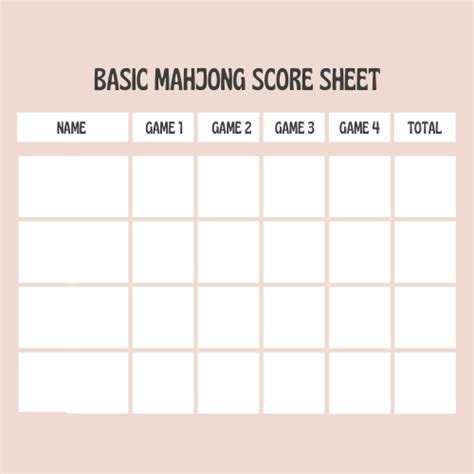Fast Track to Mahjong: The Cheat Sheet
Mahjong, the ancient Chinese tile game, can seem daunting at first. With its myriad tiles, complex hands, and subtle strategies, it's easy to feel overwhelmed. But don't despair! This cheat sheet provides a fast track to understanding the fundamentals, allowing you to jump into the game and start enjoying the strategic thrill.
What are the Tiles and How Many are There?
A standard mahjong set contains 144 tiles, divided into three main categories:
-
Suits: There are three suits—Bamboo (索, Suo), Characters (萬, Wan), and Circles (筒, Tong)—each with tiles numbered 1 through 9. Each suit has four copies of each numbered tile (36 tiles total per suit, 108 tiles total).
-
Honors: These tiles don't belong to the numbered suits. There are four Winds (East, South, West, North), and three Dragons (Red, Green, White). There are four copies of each honor tile (28 tiles total).
-
Flowers and Seasons: These tiles are typically not used in scoring but add a layer of complexity to the game. There are four flowers and four seasons. They're often set aside once drawn. (16 tiles total)
How to Win: Forming a Winning Hand (Han)
The ultimate goal in Mahjong is to create a winning hand, often called a han. A winning hand typically consists of:
-
Four sets: These are groups of three identical tiles (a pung) or three consecutive numbered tiles of the same suit (a chow).
-
A pair: Two identical tiles.
There are many variations in rules and scoring depending on the specific style of Mahjong played (e.g., American Mahjong, Hong Kong Mahjong, Riichi Mahjong), but this basic structure applies across most versions.
Understanding Basic Terminology
-
Chow (吃): Taking one tile from a discarded tile to complete a sequence of three consecutive numbered tiles of the same suit. Example: You have 2 and 3 Bamboos, and an opponent discards a 1 Bamboo; you can "chow" to make a 1-2-3 Bamboo set.
-
Pung (碰): Taking three identical tiles from discarded tiles. Example: You have two 5 Circles and an opponent discards a 5 Circle; you can "pung" to make a set.
-
Kong (槓): Taking four identical tiles (either from your hand or by melding three from a pung and adding one discarded tile). This is a powerful move.
-
Discarding: After drawing a tile, you must discard one.
-
Self-Drawn Hand: Winning by drawing the final tile needed to complete your hand.
-
Robbing a Kong: Taking the fourth tile of a Kong from the player who is making the Kong (this is a powerful move!).
What are the Different Types of Mahjong Hands?
Mahjong boasts a wide variety of hand types, each with its own scoring value. These range from basic hands to complex combinations involving specific tile sets and patterns. Learning these different hand types is crucial to mastering the game, but understanding the fundamental requirements for a winning hand is a great starting point.
Frequently Asked Questions (FAQ)
What are the basic rules of Mahjong?
The basic rules involve drawing tiles, discarding tiles, creating sets (pungs, chows, kongs), and forming a winning hand (typically four sets and a pair) following specific turn order and rules about taking tiles from discards.
How do you score in Mahjong?
Scoring varies greatly depending on the specific ruleset. Points are usually awarded based on the type of winning hand achieved, additional bonuses (e.g., for self-drawn hands, special tile combinations) and sometimes based on the value of the winning tile.
Is Mahjong difficult to learn?
While the initial learning curve may seem steep due to the number of tiles and the variety of possible hands, the core mechanics are relatively straightforward to grasp. With practice and patience, anyone can learn to play Mahjong.
Where can I find more information about Mahjong rules?
Numerous resources exist online, including websites, videos, and books dedicated to teaching the rules and strategies of different Mahjong variations. Choosing a specific variation (like American Mahjong or Riichi Mahjong) will help narrow your search.
This cheat sheet provides a solid foundation for your Mahjong journey. Remember that practice is key! Start playing, and you'll quickly become more familiar with the intricacies of this captivating game. Good luck and have fun!

